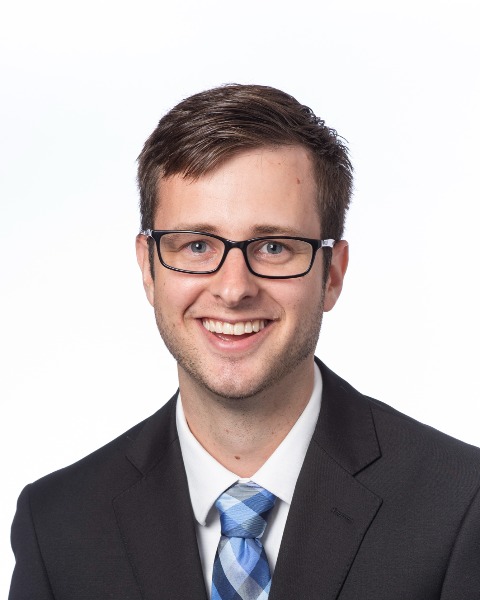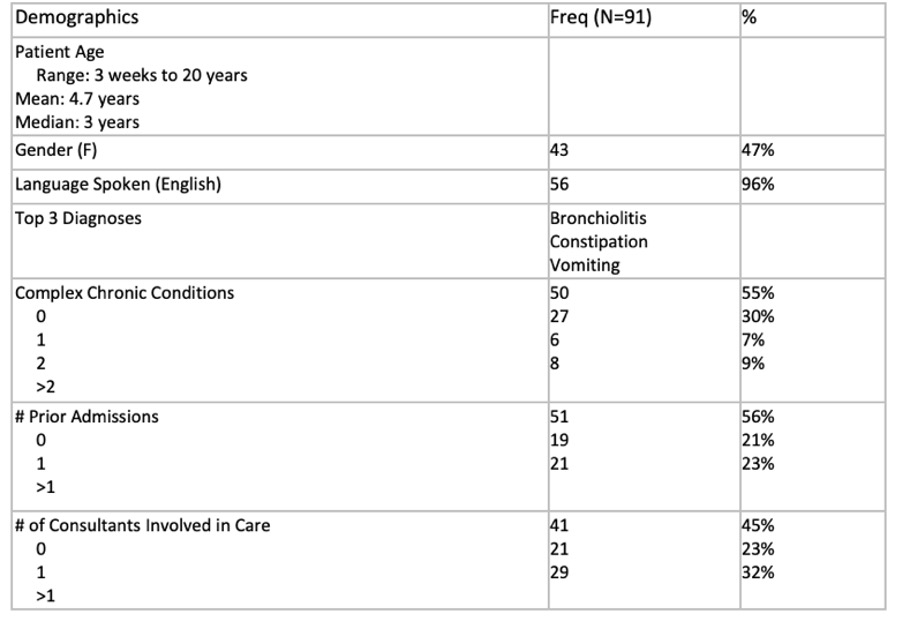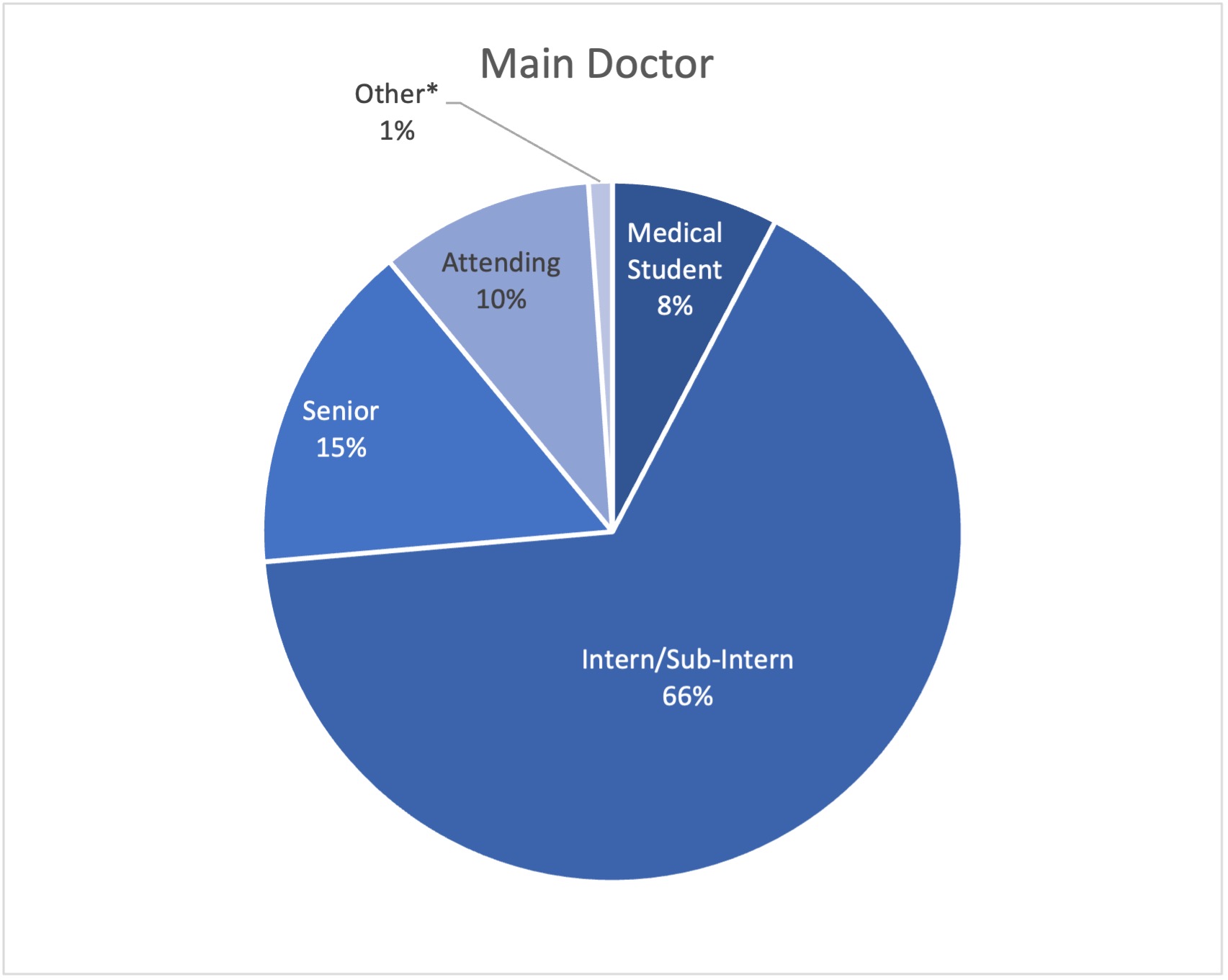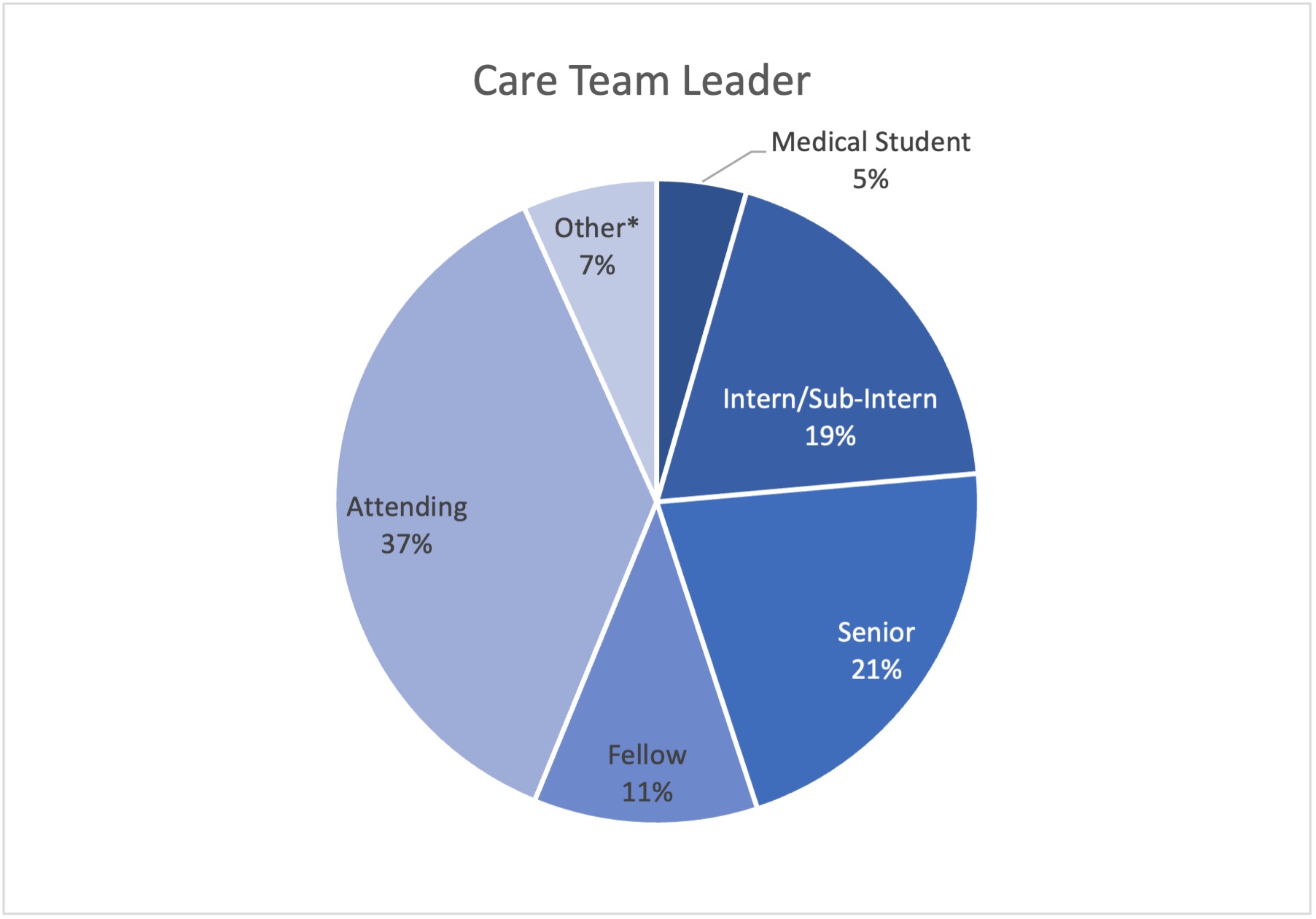Hospital Medicine: Education
Hospital Medicine 3
497 - Who is My Child’s Main Doctor? Caregiver Perceptions of Teaching Teams
Publication Number: 497.221

Jonathan Ermer, MD (he/him/his)
Pediatric Hospital Medicine Fellow
Children's Mercy Hospitals and Clinics
Prairie Village, Kansas, United States
Presenting Author(s)
Background:
At academic medical centers, children are cared for by large medical teams including medical students, interns, senior residents and fellows on patient- and family-centered rounds (PFCR). The size and structure of these teaching teams can make it difficult for patients and families to know who is caring for them and establish a trusting relationship. Studies have shown that patients have higher satisfaction when they can identify a main doctor. Learners desire autonomy and ownership of their patients, however the hierarchical structure of teaching teams could serve as a barrier to autonomy. Previous literature in adults has shown that patients often perceive the intern as their “main doctor,” but this has not been studied in pediatrics.
Objective: We sought to describe who caregivers identify as their child’s main doctor and record the frequency of caregivers who identified the PFCR presenter (medical student or intern) as their child’s main doctor. We also describe who caregivers identify as the care team leader. Finally, we describe the frequency of caregivers who were aware that their child was going to be cared for by a large team of doctors at different levels of training.
Design/Methods:
We conducted a single-institution prospective cohort study using a convenience sample of caregivers admitted to pediatric hospital medicine teaching teams that conduct PFCR. After a rounding encounter, we surveyed caregivers who speak English or Spanish. Photos of all masked team members were provided to caregivers when asked to identify the child’s main doctor and the care team leader. With permission from the caregiver, we recorded the number of prior admissions, active consultants during the current admission, and number of complex chronic care conditions for each patient.
Results:
A total of 91 patient caregivers were surveyed. Patient demographics are listed in Table 1. Graphs 1 and 2 indicate who caregivers selected as their child's main doctor, and who was in charge of their child’s care team, respectively. 46% of respondents did not know their child would be cared for by a large team of doctors, and 43% of respondents did not know learners would be involved in their child’s care.
Conclusion(s): In our study, caregivers identified the intern/sub-intern most often as their child’s main doctor. Identification of their child’s care team leader was highly varied. Nearly half of caregivers were unaware that large medical teams with learners at different training levels would care for their child. Our results reveal a gap in how we orient patients and caregivers to teaching teams.


